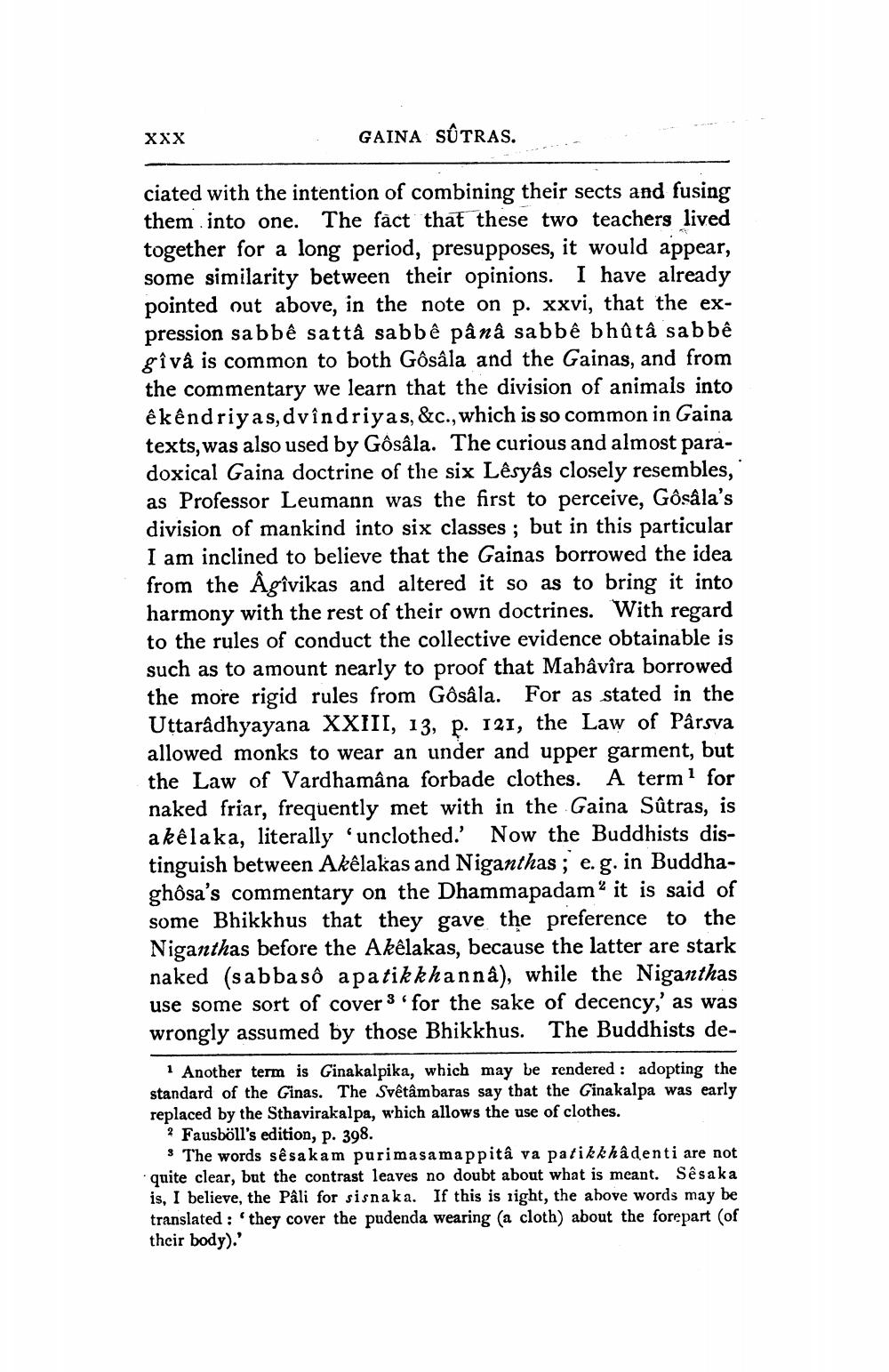________________
XXX
GAINA SÛTRAS.
ciated with the intention of combining their sects and fusing them into one. The fact that these two teachers lived together for a long period, presupposes, it would appear, some similarity between their opinions. I have already pointed out above, in the note on p. xxvi, that the expression sabbê sattâ sabbê pânâ sabbê bhûtâ sabbê gîvâ is common to both Gôsâla and the Gainas, and from the commentary we learn that the division of animals into êkêndriyas, dvîndriyas, &c., which is so common in Gaina texts, was also used by Gôsâla. The curious and almost paradoxical Gaina doctrine of the six Lêsyâs closely resembles, as Professor Leumann was the first to perceive, Gôsâla's division of mankind into six classes ; but in this particular I am inclined to believe that the Gainas borrowed the idea from the Âgîvikas and altered it so as to bring it into harmony with the rest of their own doctrines. With regard to the rules of conduct the collective evidence obtainable is such as to amount nearly to proof that Mahâvîra borrowed the more rigid rules from Gôsâla. For as stated in the Uttarâdhyayana XXIII, 13, p. 121, the Law of Pârsva allowed monks to wear an under and upper garment, but the Law of Vardhamâna forbade clothes. A term for naked friar, frequently met with in the Gaina Sûtras, is a kêlaka, literally "unclothed. Now the Buddhists distinguish between Akêlakas and Niganthas; e.g. in Buddhaghôsa's commentary on the Dhammapadam? it is said of some Bhikkhus that they gave the preference to the Niganthas before the Akêlakas, because the latter are stark naked (sabba sô apatikkhanna), while the Niganthas use some sort of covers for the sake of decency,' as was wrongly assumed by those Bhikkhus. The Buddhists de
1 Another term is Ginakalpika, which may be rendered : adopting the standard of the Ginas. The Svêtâmbaras say that the Ginakalpa was early replaced by the Sthavirakalpa, which allows the use of clothes.
? Fausböll's edition, p. 398.
* The words sê sakam purimasa mappitâ va patikkhâdenti are not quite clear, but the contrast leaves no doubt about what is meant. Sêsaka is, I believe, the Pâli for sisnaka. If this is right, the above words may be translated : 'they cover the pudenda wearing (a cloth) about the forepart of their body).'




